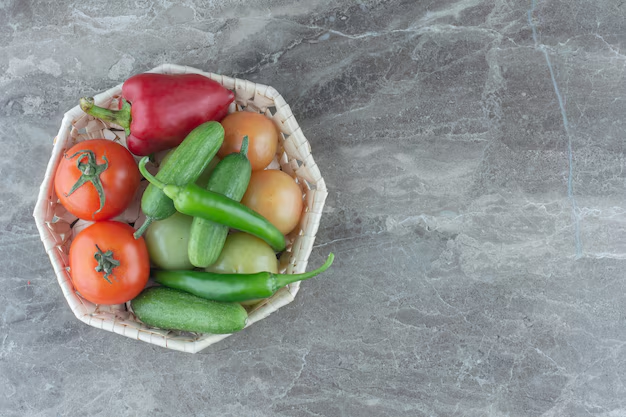How Long Can You Safely Keep Chili in the Refrigerator?
Imagine this: You’ve just cooked a pot of delicious homemade chili, but now you’re left with more than your stomach can handle in one sitting. You find yourself wondering how many days you can safely keep this chili in the refrigerator. Fear not! Dive in as we explore the ins and outs of chili storage, best practices, and some tips you might not have considered.
🥘 Understanding Chili: What Makes It a Storage Challenge
Chili is a hearty, versatile dish loved for its rich flavors and the variety of ingredients it can include—from ground meats and beans to tomatoes and various spices. While its complexity is part of what makes chili such a comfort food staple, it also complicates its storage due to the perishable nature of these ingredients.
🍅 Ingredient Breakdown: The Role of Each Component
- Proteins: Ground beef, turkey, or chicken can spoil quickly if not stored properly. The growth rate of bacteria is faster in cooked proteins compared to other ingredients.
- Vegetables: Items like tomatoes and peppers contribute moisture that can accelerate spoilage if not stored right.
- Beans: While stable when dried, once cooked, beans are susceptible to mold and bacterial growth.
Understanding these components helps us appreciate why proper storage is critical for both safety and flavor retention.
🕒 The Safe Storage Timeline for Chili
In the Refrigerator: Typically, chili lasts 3 to 4 days in the refrigerator. This timeframe is a general rule for many cooked dishes, as bacteria growth can reach harmful levels beyond this period.
Why Just 3 to 4 Days?
The temperature of a refrigerator, generally set below 40°F (4°C), slows down bacteria growth but does not halt it entirely. With chili’s complex mix of ingredients, including proteins and moisture-heavy ingredients, it presents a rich environment for bacteria if stored too long.
When is Chili Still Safe to Eat?
While the 3 to 4-day rule is a standard guideline, several factors can extend or shorten this timeframe:
- Storage methods: Properly sealing your chili in airtight containers can prevent contamination and moisture loss, potentially extending its shelf life.
- Refrigerator temperature: Maintaining a consistent and optimal fridge temperature is crucial.
🌡️ Tips for Storing Chili Safely
Cool It Quickly
It's essential to cool chili rapidly to prevent bacteria from multiplying. You can do this by dividing your chili into smaller portions before refrigerating, allowing heat to dissipate faster.
Choose the Right Container
Opt for airtight containers or heavy-duty freezer bags to minimize exposure to air, which can lead to flavor deterioration and increased bacteria growth.
Storing in the Freezer
If you don't plan on eating the chili within 3 to 4 days, freezing is a great option. Chili can be frozen for up to 4 to 6 months without a significant loss of quality, making it a convenient meal-prep option.
🔍 Recognizing Spoilage: When to Throw Out Chili
Common Spoilage Signs
- Smell: An off or sour smell is a clear indication of spoilage.
- Texture: A slimy or sticky texture on the surface is a sign that bacteria have begun to multiply.
- Color: Discoloration can result from bacteria colonization.
Trust Your Senses
If you're ever unsure about whether your chili has spoiled, it's best to err on the side of caution. Spoiled chili can harbor bacteria known to cause foodborne illnesses.
🍴 Enhancing Shelf Life: Practical Storage Tips
Use of Pantry Staples
Certain seasonings and ingredients, like vinegar or lemon juice, may have preservative qualities due to their acidity, though they should not be relied upon solely for preservation.
Consistent Labeling
Label your chili containers with the date they were made and stored. This practice helps you keep track of freshness and avoids any guesswork when your next meal craving hits.
🗓️ Best Practices for Maximizing Chili Delight
To keep your chili delicious and safe for consumption, consider integrating these best practices into your storage routine:
- Containers and Portions: Use the freshest possible ingredients when making chili. Immediately after cooking, transfer into shallow containers to cool rapidly and efficiently.
- Portion Control: Store in single-meal portions to avoid repeated temperature changes from reheating and cooling.
- Heat with Care: Only reheat the portion you intend to eat.
🌟 Quick Summary: Chili Storage Tips
- Refrigeration Time: 3 to 4 days
- Freezer Time: Up to 6 months
- Spoilage Indicators: Off smell, slimy texture, discoloration
- Safety Tip: Date and label your storage containers
- Pro Tip: Let cool in smaller portions
By following these guidelines, you’ll ensure your chili remains flavorful and safe, sparking joy each time you lift the lid. Whether you’re a chili connoisseur or a casual enjoyer, understanding these essential practices will keep your kitchen adventures scrumptious and safe!
